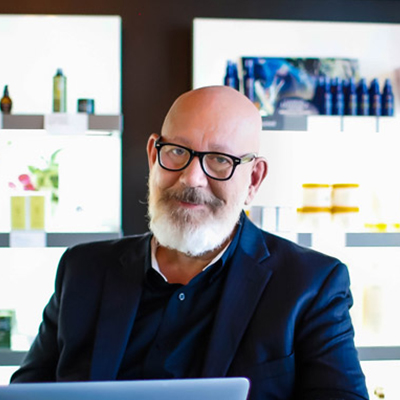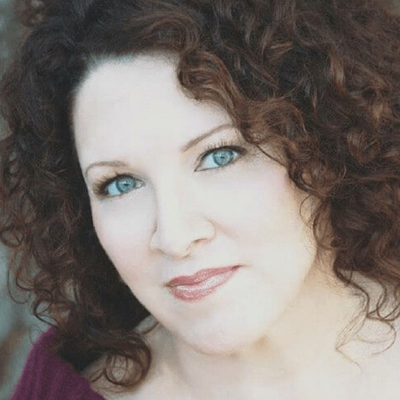Lessons Learned: Owners Share Strategies for In-Salon Education
At Serious Business in January, a panel of owners gathered to discuss how education looks in each of their salons and how they created these successful programs.
The panelists included Tim Belcher, owner of Whole Aveda Salon Spa Group in Tampa, Florida; Karie Bennett, owner of Atelier Salons in San Jose, California; Tatum Neill, creative director of Paris Parker Salons and co-founder of Elevate Hair; and Brandon Hensley, owner of Tangerine Salons in Dallas.
Owners understand that happy, educated stylists produce satisfied customers. Educating stylists to their full potential is very important to owners and is an expense they would not want to avoid.




Below is the panelists’ honest conversation about the inspiration behind and challenges with creating an education program that benefits the whole business.
ON CREATING AND EVOLVING YOUR PROGRAM
Karie Bennett: “When I opened my first Aveda Lifestyle Salon 15 years ago, I had four stylists. So my goal was to get new stylists in quickly. I had a year-long program that was half color and half cut. Over the years, we’ve had to adapt the program continuously—I’m constantly reinventing the wheel.”
Tim Belcher: “Our program is all about my involvement with the Aveda Institutes. We have a presence because it’s vital to get to know the educators teaching our future stylists.”
“We have new-recruit auditions with up to 20 people auditioning at the same time with the models they bring. After they arrive, we switch models around and pair them up with another student. During the process, my senior staff rates them, and then the whole staff is part of choosing who we hire.”
“From there, we have a week of soft skills. This is where they learn our culture, philosophy and non-negotiable behaviors and expectations. By the end of the week, new hires are clear on what our core values are.”
“In the last week of training, they bring in models and we assess their skills. Then they move into our entry-level, new talent group where they have benchmarks to hit.”
Tatum Neill: “We went from a centralized training module where students had to drive to a training center to a more model-based internal training in the salons where the stylists are going to live.”
“We train to the digital standards from Learn Aveda, and it’s up to the students to bring in their models.”
“We’ve also incorporated photography into our education, which helps students see their work from another perspective and helps them in social media. They’re learning to take better photos, which has generated more marketing material.”
Brandon Hensley: “We’ve really tried to hone our program down and evolve it. We’ve found we need to look at the individual and create a program that allows each person to go at their own pace, but also maintain our standards.”
“We’ve boiled the program down to one year in three-month segments. It is merit-based, but adaptive to each individual. We set the standard, and if they meet it, they can move forward. This lets the advanced people move faster through the program fairly. We’ve been able to marry the best of both worlds by individualizing while still having a standard.”
ON MONITORING PROGRESS
Tim Belcher: “We check our new stylists’ confidence level when they go on the floor. We also look at the numbers. Are their benchmarks getting so good that we have to increase them?”
Karie Bennett: “I check in with them a lot, and I also ask for them to evaluate each other. And when they get on floor, I check their rate of re-dos and adjustments.”
Tatum Neill: “They start with one or two days on the floor and then build their books to move up to five days. We see through retention and productivity how successful they are. The ones who find models quicker also build their books faster, have higher productivity and retention.”
Brandon Hensley: “We trust our educators and mentors to train new stylists on how they should represent us. The goal is to make sure everybody bleeds Tangerine.”
ON BUILDING YOUR INFRASTRUCTURE
Tatum Neill: “We have a core group of educators and a training facility. We try to train when we’re slow, so Monday is our day.”
Karie Bennett: “I appointed an education director this year, and she puts our technical information into a framework. We have a calendar, and students know there is a beginning, middle and end.”
“Structure is a safety net for me and my company. So we have clear rules around our classes about everything from dress code to what happens when someone is late.”
Brandon Hensley: “We put someone on salary as a lead educator. However, she’s still required to work two days behind the chair so she can relate to clients, stay on trend, etc.”
“And if a master stylist wants to be a mentor, I give them a 5-percent commission raise on everything they do in order to have access to them all year long.”
“It enables me to put an apprentice with a master stylist as a personal assistant.”
“On Mondays we have class coupled with classes with mentors. I’m a big fan of having a road map so everyone knows where they’re going and that they will have the proper help to get them there.”
Tim Belcher: “We have different classes once a month on Mondays and we pay an in-house educator $50/hour.”
“But I’m less of a purist. If the salon needs people on the floor, I fast track them to get there.”
ON SETTING AN EDUCATION BUDGET
Tim Belcher: “My education budget is 2 percent, which includes what we pay educators.”
Karie Bennett: “We pay our educators per hour to teach class as well as for prep/office stuff. We spend almost $5,000 per protégé over two years.”
Tatum Neill: “We budget about 1.6 percent of our total budget for education. It’s slightly skewed because they are working in the salon as interns. It’s hard to quantify the return on investment.”
Brandon Hensley: “We spend about 2 percent of our budget on education. This would be one of the last things we drop because it’s the future of our company.
There are always people moving or going on maternity leave—we need a full bullpen, and I like to invest in people.”
ON OVERCOMING CHALLENGES
Karie Bennett: “I wish it was easier to get students. Booth rental is everywhere in California, and I just don’t understand going rental right out of school. We have an Aveda school about 45 miles away, but that’s a long way. Once they find us though, it’s not a challenge to keep them.”
Tim Belcher: “My biggest challenge is how to scale my one location to work at all locations. Involvement at the Institutes is paramount because educators recommend where their favorite students should go. We send the educators lunch a couple times a year and invite them in for services. They need to know us.”
Tatum Neill: “Our biggest challenge is figuring out if it’s time or experience that makes a good hairdresser. The two-year program isn’t working for us so we’re scaling it back. Where is the balance? If I told a kid today it would take two years before she was on the floor, I can’t imagine the reaction.”
“So we’re figuring out how to be more nimble and shorten the program, because when you’ve invested so much time in them and they move on to something else, it’s a loss.”
ON CREATING A UNIQUE PROGRAM
Tatum Neill: “Part of our training process is submitting photos, using social media and recruiting models on social media.”
“So we show them how to take photos for class, get models, and maximize Instagram. We also walk them through the consultation process. This allows us to track their progress throughout their careers—social media validates.”
“Clients are on social media, so it’s important to teach stylists how to create tangible relationships and compel someone to come in the salon. We teach them how social media can grow their business.”
Karie Bennett: “We want them to have a long, healthy career. So part of our curriculum is ergonomics class. Everyone comes in yoga clothes and I set a timer for a minute for six different stations.”
“They do scissor reps where they strengthen their hands, figure-four stretches and stretches to avoid varicose veins to name a few.”
“Another favorite class is ambush consultations. We teach them how to take negative terms and use positive language. I like to mix it up and have fun by interjecting soft skills classes.”
Brandon Hensley: “We have a huge Instagram following because editorial work and photography attract students—that’s how they judge the salon, through our website and Instagram.”
“The younger generation really loves the spotlight, so we have a contest between our salons to do an editorial shoot following NAHA guidelines. Then at our Christmas party we give out an award. It cultivates culture and creativity. We reap a ton of benefits from it.”











